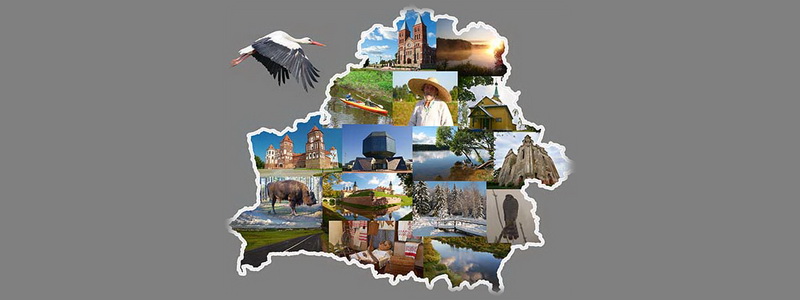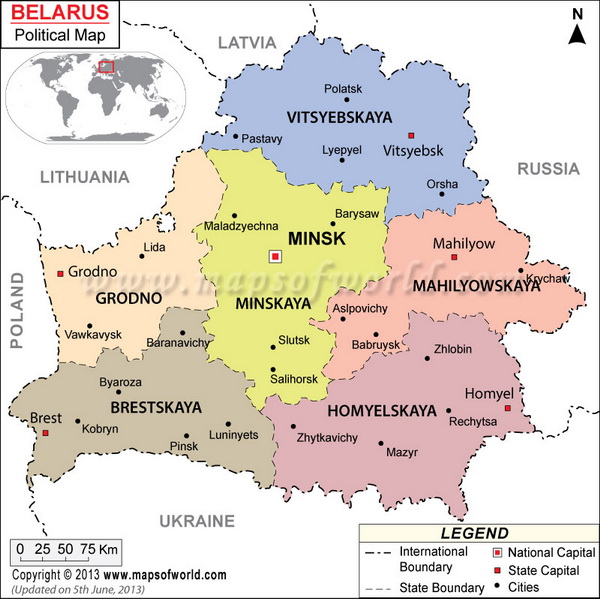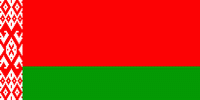
Республика Беларусь
THE REPUBLIC OF BELARUS
- Official name the Republic of Belarus
- Capital Minsk
- Area 207, 600 sq. km.
- Population 9,5 million
- Head of the state President
- Language Belarusian, Russian
The Republic of Belarus is situated in the centre of Europe. It borders on Latvia, Lithuania, the Ukraine, Russia and Poland. Its present population is about 9,5 million people. Belarus is a land of vast plains and picturesque hills, thick forests and green meadows, deep blue lakes and flowing rivers.
Forests cover 2/5 of Belarus, they are scattered all over the country. There are a lot of rivers and lakes in our country. The Dnieper, Pripyat, Berezina, Sozh, Zapadnaya Dvina, Neman are the biggest rivers with more than 500 kilometers in length. The largest lake in Belarus is Lake Naroch, which stretches 13 kilometers from West to East. It is a very popular recreation area in our country. Belarus has a moderately continental climate due to the Atlantic influences with a warm winter and a warm summer.
To most of the world Belarus is relatively unknown, a new country in central Europe. To its people it’s an ancient land. The history of Belarus goes back to ancient times beginning with the Polotsk Principality in the 10th century. From the 13th until the 16th century, the territory of present-day Belarus was the core of the Grand Duchy of Lithuania in which Belarusian was the official language. It was one of the largest, most powerful and flourishing states in Eastern Europe.
The 16th century was the Golden Age of Belarusian history. In this period, there was a wide growth of old and the foundation of many new cities and towns.
As Belarus is situated in the centre of Europe, many wars took place in its territory. In the 20th century alone Belarus has lived through three revolutions and three bloody wars. The Great Patriotic war of 1941 — 1945 is one of the most heroic and tragic periods in the history of the country. The Nazi occupied the territory of Belarus for three years. The country lost more than 3 million people (every third citizen of Belarus fell in the fight against fascism); many towns and villages were ruined. Belarus lost more than half of its national wealth.
Today Belarus is a developed industrial state. Industry makes up 70% of the Gross National Product. The main industries are engineering, chemical industry, woodworking industry, light and food industries. The major industrial centres in Belarus are Minsk, Gomel, Vitebsk, Mogilev, Soligorsk, Zhodino, Brest and others. Belarusian goods are exported to many countries and are known all over the world.
Agriculture of Belarus specializes in milk and meat production, flax, vegetables (especially potatoes) and fruit (especially apples).
The Republic of Belarus has well-developed science and education system. The Academy of Sciences founded in 1929 is one of the largest centres of science in the country. Its research institutes work on various important problems in such fields as mathematics, optics, genetics, biology, etc. Nowadays there are 43 universities, academies and institutes, which provide training in various spheres of science and humanities in Belarus.
Nowadays the Republic of Belarus is a sovereign independent state. The Declaration of State sovereignty was adopted in 1990. There are three branches of state power in the Republic of Belarus: Legislative (Supreme Soviet), Executive (Council of Ministers) and Judicial (Supreme Court). According to the existing constitution (1996), the head of the state is the President.
At present Belarus actively participates in an effective international partnership with the governments of different states and international organizations. It is a co-founder of the United Nations Organization. Belarus cooperates with such countries as Germany, Denmark, France, Canada, Italy, the Netherlands, Sweden and many others.


